This is a multi column pivot not an unpivot:
--BUILD Sample dataset called MyTable
WITH MyTable as (
SELECT 0 slab_from, 100 slab_to, 1 discount FROM dual union all
SELECT 100 slab_from, 200 slab_to, 5 discount FROM dual union all
SELECT 200 slab_from, 99999999 slab_to, 8 discount FROM dual ),
--Now build a CTE with a row number that we can use to pivot the data.
CTE as (SELECT Slab_from, Discount, row_number() over (Order by slab_FROM) RN
FROM myTable)
--Now build the data set. Though I'm a bit confused why there are 4 slabs and 3 discounts in your expected results...
SELECT * FROM (SELECT * FROM CTE)
PIVOT (
max(slab_from) as SLAB, max(Discount) as Discount --[We could add max(Slab_to) SLABTO] to get the max value for each as well if needed...
for RN in (1,2,3,4,5) --RowNumber values 1-5 since 5 is max according to question
);
The above gives us:
+--------+------------+--------+------------+--------+------------+--------+------------+--------+------------+
| 1_SLAB | 1_DISCOUNT | 2_SLAB | 2_DISCOUNT | 3_SLAB | 3_DISCOUNT | 4_SLAB | 4_DISCOUNT | 5_SLAB | 5_DISCOUNT |
+--------+------------+--------+------------+--------+------------+--------+------------+--------+------------+
| 0 | 1 | 100 | 5 | 200 | 8 | | | | |
+--------+------------+--------+------------+--------+------------+--------+------------+--------+------------+
If you want the column names to begin 0 just subtract 1 from the RN in the CTE.
Possible Answer 2: Tweeked: assuming all slab ranges start at 0 and that 1-5 are reserved for actual rows that may/maynot be in your base table.
--BUILD Sample dataset called MyTable
WITH MyTable as (
SELECT 0 slab_from, 100 slab_to, 1 discount FROM dual union all
SELECT 100 slab_from, 200 slab_to, 5 discount FROM dual union all
SELECT 200 slab_from, 99999999 slab_to, 8 discount FROM dual),
--Now build a CTE with a row number that we can use to pivot the data.
CTE as (SELECT 0 "0_SLAB", Slab_to, Discount, row_number() over (Order by slab_FROM) RN
FROM myTable)
--Now build the data set. Though I'm a bit confused why there are 4 slabs and 3 discounts in your expected results...
SELECT * FROM (SELECT * FROM CTE)
PIVOT (
max(slab_to) as SLAB, max(Discount) as Discount --[We could add max(Slab_to) SLABTO] to get the max value for each as well if needed...
for RN in (1,2,3,4,5) --RowNumber values 1-5 since 5 is max according to question
);
The only difference here is I use slab_to and I hardcode 0_SLAB to 0 so all other possible ranges adjust from 1-5.
Columns are prefixed instead of suffixed but that's how the pivot does it. and they are not in order of all slabs first followed by all discounts; but again; that's how the pivot does it; but column order and name I wouldn't think would matter so long as the data is right and repeatable.
But I still struggle with why the pivots' needed.. You have the data needed in a row based table that is normalized, extract the data iterate though it in the application and present it I don't know why we need the data to be pivoted.





